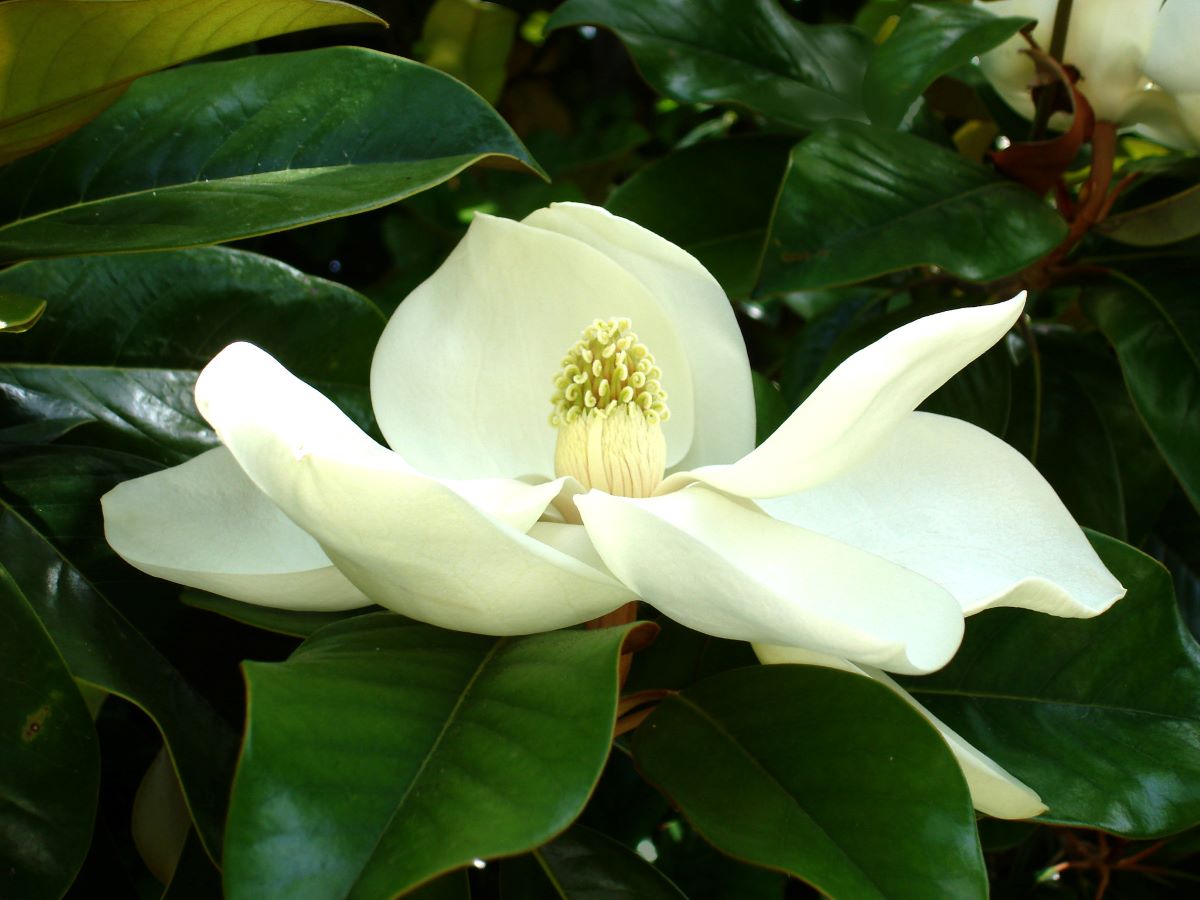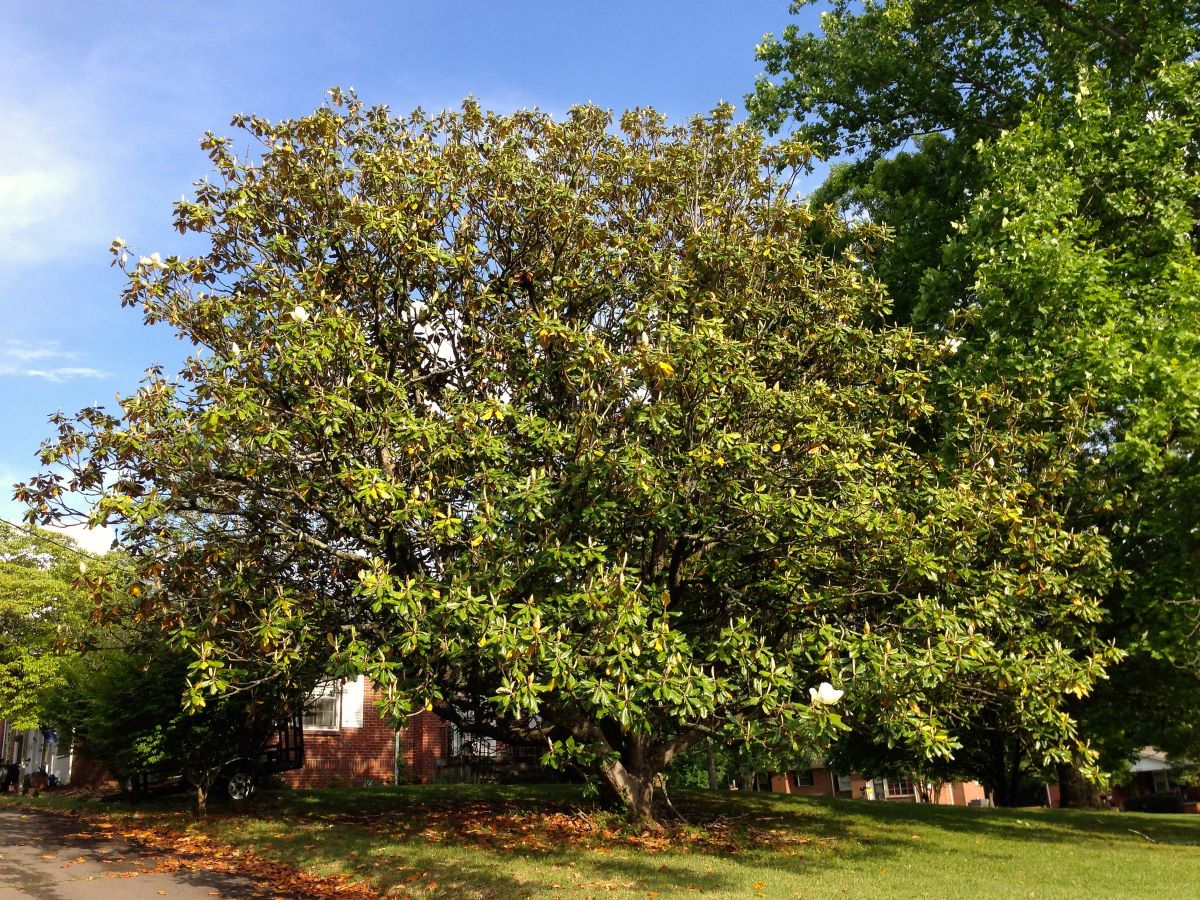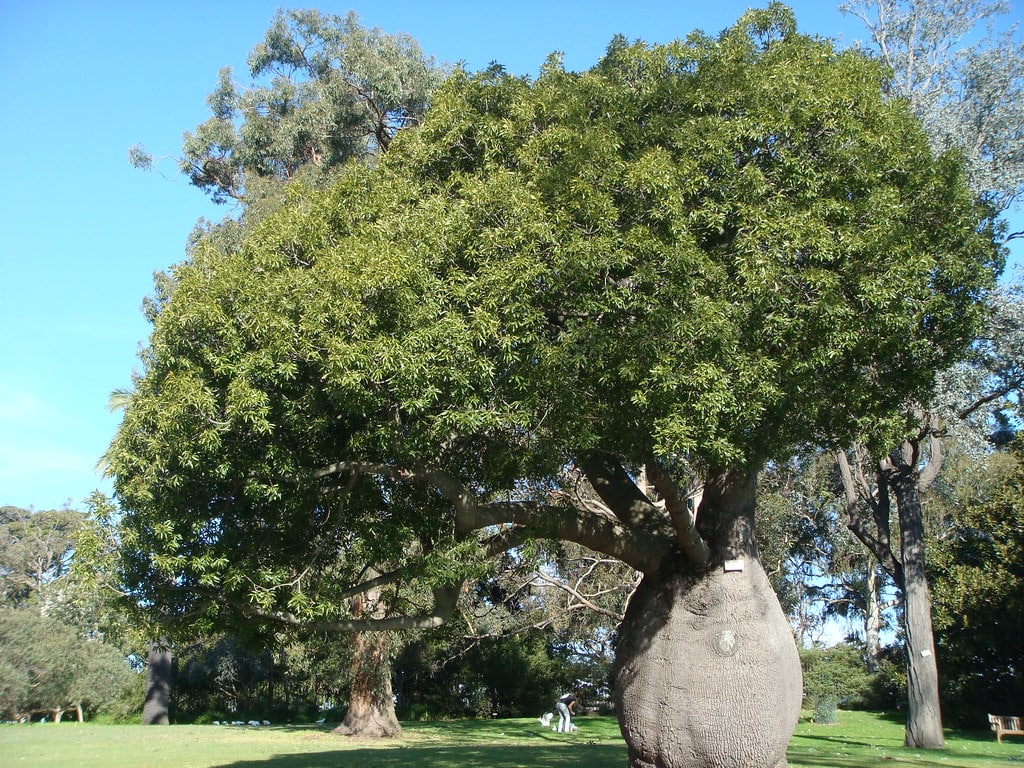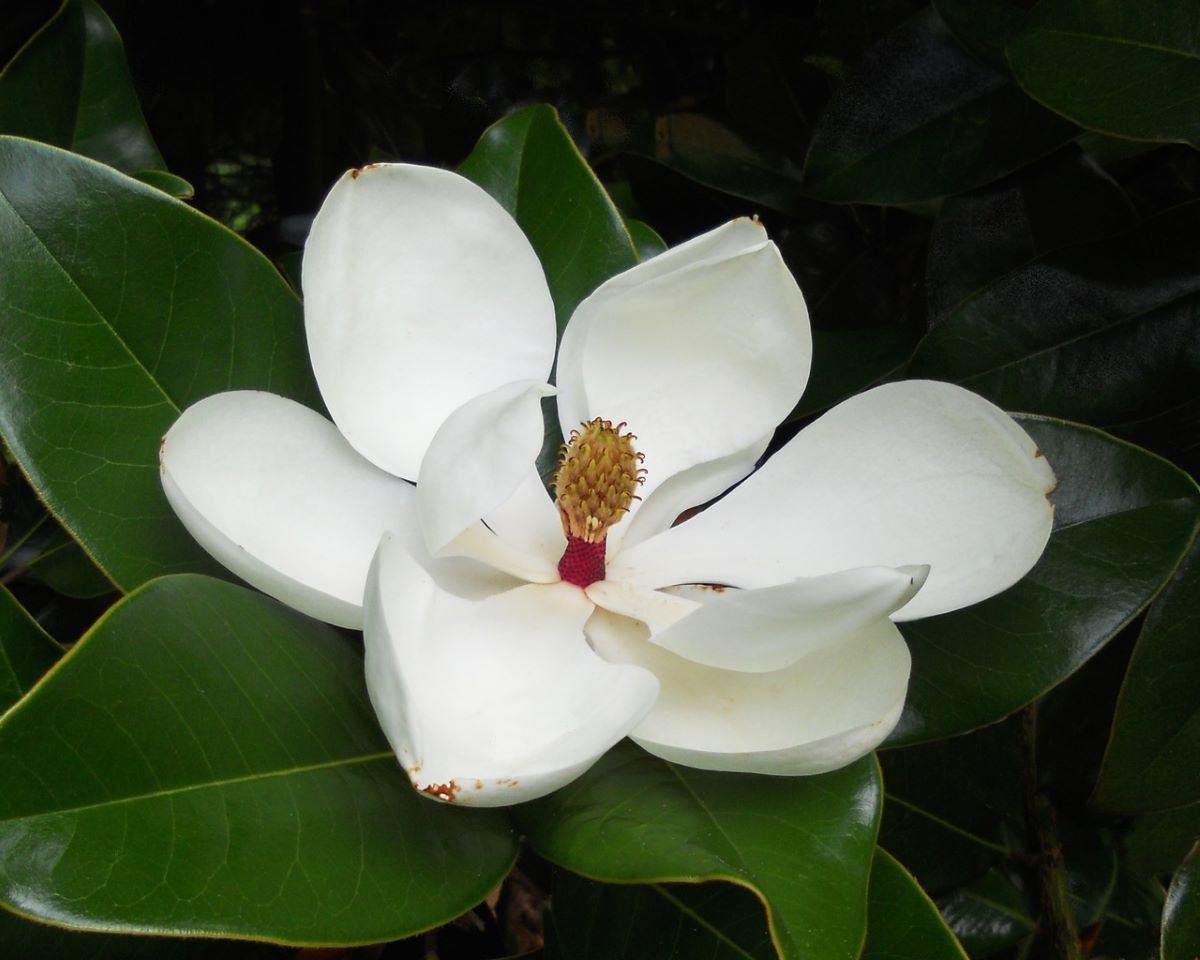
Image – Flickr/Ava Babili
La magnolia grandiflora it is a large tree, with such beautiful flowers that for that reason alone there are many people who, even if they do not have a garden, are encouraged to grow it in a pot. This is not the most appropriate if we take into account that it exceeds 15 meters in height, but it grows at a fairly slow rate, with which it can be in the same container for several years.
One of its most notable characteristics is that it flowers from a young age, and also has no problem producing its flowers even when in a pot. For this reason, it is an interesting species, since, as if that were not enough, it is easy to care.
Origin and characteristics of magnolia grandiflora

Image - Flickr / vhines200
La magnolia grandiflora is a species of evergreen tree native to the southeastern United States we know as magnolia, magnolia or common magnolia. If we compare it with other species of the Magnolia genus, it is very striking that its foliage is perennial; that is to say, it is a plant that we will see all year round with leaves. This characteristic is mainly due to the fact that throughout its evolution it has lived in areas where the climatic conditions have allowed it to maintain them without suffering damage.
And this is very interesting, because it means that it can live in places where the climate is mild. It does not need to be warm or cold like other varieties of magnolias. In fact, it can be grown in tropical regions. But yes, It must be taken into account that it can measure about 30 meters in height., sometimes more. Its crown is pyramidal but very, very dense, and it can also measure 4-5 meters in diameter.
The leaves are large, measuring up to 20 centimeters in length by up to 10 centimeters in width. They are dark green on the upper side and pubescent on the underside. They have leathery texture, and ovate shape.
magnolia blooms during spring. These flowers measure up to 30 centimeters in diameter, and are white, as well as highly scented. As we said at the beginning, they appear soon in the tree. I myself have a specimen that with only 1 meter in height (not counting the pot) began to produce flowers.
And lastly, the fruit is actually a grouping of tiny fruits known as a follicle. These contain 1-2 seeds wrapped in a reddish structure called an aril. But you have to know that, although its flowers are hermaphrodites, it can take a decade to produce seeds.
What are the uses of magnolia?
Our protagonist is used for many purposes, which are:
- Garden plant: It is a magnificent tree, which gives very good shade and also produces large flowers. Although it grows slowly, it is often kept as a solitary specimen since as the years go by it needs more and more space.
- Decorate terraces: It is grown in pots for many years, on terraces and patios. When you don't have a garden, it is interesting to have it near the sofa or table that we have in those spaces, so that it protects us from the sun.
- Medicinal: Both the seeds and the bark of its trunk are consumed as an infusion to treat various diseases, both of the respiratory and digestive systems.
- Perfumery: could not miss. The aroma of its flowers is sweet, intoxicating. That is why magnolia colonies are made.
How is the care of the magnolia grandiflora?

If you have a copy, or plan to have it, then we will see what care it needs:
Location
If we keep in mind that it can exceed 30 meters, it must be taken abroad. But depending on the climate in the area where we grow it, it will be better to put it in the shade or in the sun.
For example, if you are in an area where the climate is mild and humidity is high, then you may be in a sunny spot. On the other hand, if you are in the Mediterranean region, especially near the coast, it is preferable that it grows in semi-shade or shade because in these areas the degree of insolation is very high and could burn the leaves.
Earth
The magnolia is what we know as an acid plant; that is it can only grow in soils whose pH is low, between 4 and 6. Fear the limestone. But you also have to think that it fears flooding. Therefore, if your garden tends to flood easily when it rains, you will have to improve the drainage or make a 1 x 1 meter hole for your tree and fill it with a mixture of substrates, for example: substrate for acid plants with pumice or arlita (for sale here) in equal parts.
In case of growing it in a pot, you can fill it only with soil for acid plants (for sale here). But if you are in the Mediterranean, I advise you to grow it in coconut fiber, since that way its roots will not suffer as much during the summer due to the high temperatures and the high degree of insolation.
Irrigation
Being an acid plant, It has to be irrigated with low-lime water.. The most suitable is undoubtedly the rain, as long as it is clean. But of course, since it doesn't rain in all places with the same frequency or in the same amount, you may have problems getting it. If this is the case, don't worry, because if the tap is very hard, what you can do is the following:
- First, fill a pot with water and bring it to a boil.
- Then take a saucepan and carefully fill a one liter bottle with that water.
- Now use a pH meter. See how tall it is. If it is 7 or 8, pour the liquid from half a lemon into the bottle.
- Lastly, check the pH again. If it is between 4 and 6, perfect. Now you just have to wait for it to finish cooling down and then use it. But if it's still high, add more natural lemon juice.
Water several times a week during the summer, until all the soil is well soaked. During the winter you will have to space out the waterings, since the soil stays moist for longer.

Subscriber

The subscriber is very important so that it does not have nutritional deficiencies. It must be paid from spring to the end of summer, and on a regular basis. As fertilizers we can use any of organic origin, liquid, powder or granulated, such as manure, compost, humus, mulch or guano. It is only important that we follow the instructions on the packaging.
In the event that its leaves become chlorotic, that is, yellow and the nerves green, we will have to apply iron chelate (for sale here). Or fertilize from time to time with a fertilizer for acid plants (for sale here).
Multiplication
The magnolia multiplies by seeds in winter; and in spring by cuttings, layering and also by grafting.
Pests
Nothing worrying. Maybe we will see some cochineal in summer, but it is rare. And if it appears, it is easily removed with a little water and neutral soap.
Management
As for diseases, fungi can cause lumps to appear on branches, spots on leaves, or even rotting of bark. They favor humid environments and warm temperatures, so it is important to water only when necessary. If it rains in summer, it will not hurt to do preventive treatments with copper or sulfur, once every 15 days.
If we see symptoms, we will remove the affected parts as much as possible and apply fungicides following the instructions for use.
Transplant
If you have your magnolia in a pot, think about planting it in another that measures about 10 centimeters -more or less- in diameter and depth more than the previous one approximately every 3 or 4 years. Do it in spring, so that it can resume its growth as soon as possible.
In case you want to plant it in the garden, do it in that season too.
Rusticity
The magnolia or common magnolia resists frost down to -18ºC.
You like the magnolia grandiflora?